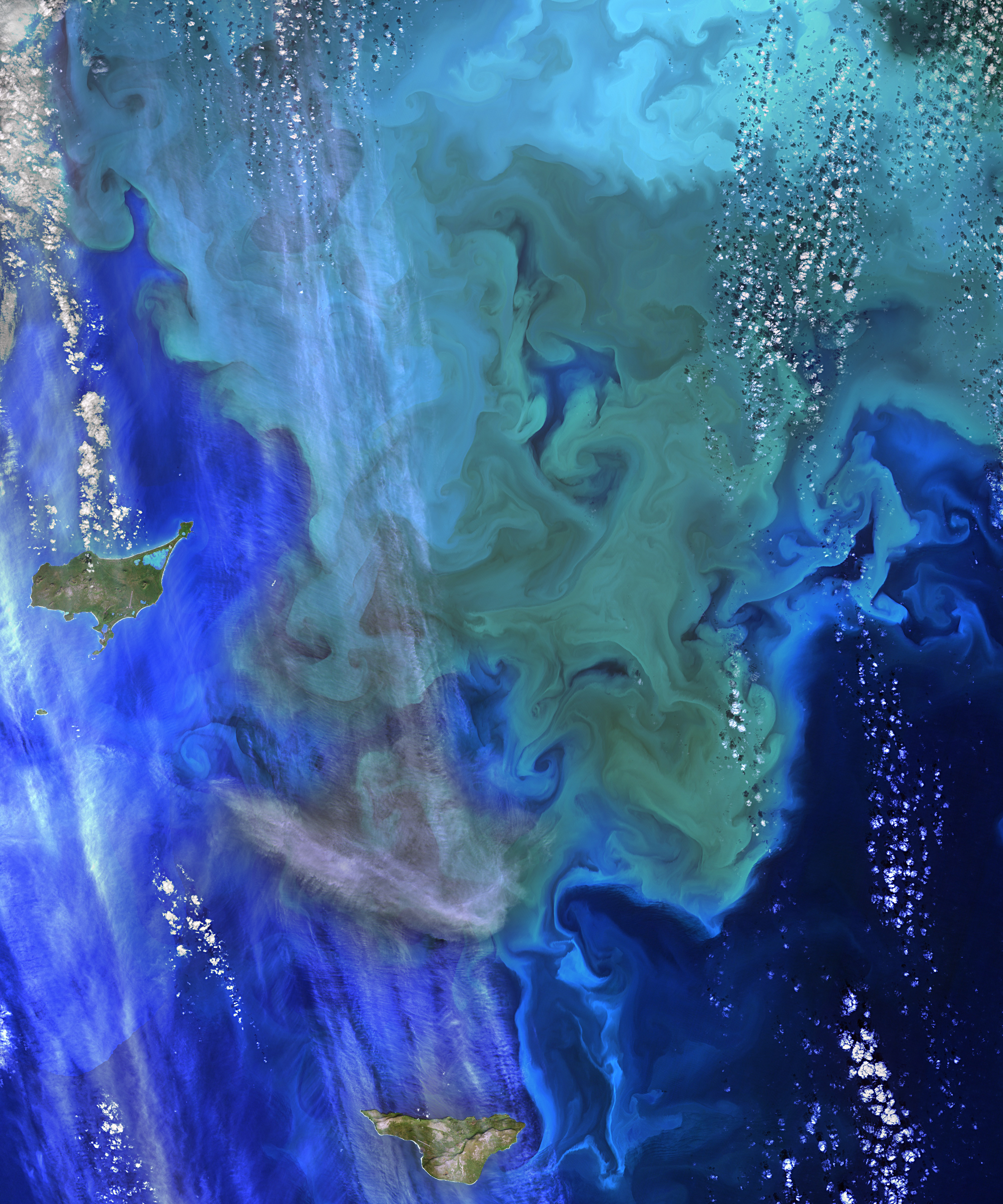In Bloom! Plankton Swirl Spotted from Space

From miles above the Earth, a plankton bloom off the coast of Alaska looks like a giant swirl of pearly green and blue paint.
Captured in a satellite image that NASA released Friday (Jan. 9), the milky green and light blue swirls in the image are dense patches of phytoplankton in the ocean, including some that have have scales made of calcite, making them appear white in the image. NASA's Landsat 8 satellite captured the image of the region near Alaska's Pribilof Islands on Sept. 22, 2014.
Phytoplankton form the base of the marine ecosystem and provide food to many different kinds of marine life. Near Alaska, huge blooms in the Bering Sea begin growing during the spring,after the winter ice recedes and more nutrients are available near the surface of the water.
The blooms start dying during the summer as the water continues to warm and the huge mats of phytoplankton gobble up most of the nutrients available at the surface. The phytoplankton themselves are picked off by fish and other marine animals. [Earth from Above: 101 Stunning Images from Orbit]
When autumn rolls around, storms over the open ocean stir nutrients back up to the surface, paving the way for the phytoplankton to bloom again.
New research from Mike Behrenfeld, an ecologist at Oregon State University, is revealing the complicated phytoplankton ecosystem. Behrenfeld and a team of researchers are working to determine the types of disturbances that cause phytoplankton to bloom into huge masseslike the one in the photo. The researchers are finding that the size of the plankton population is linked to that of the animals that rely on the plankton for food.
"Phytoplankton are rubber-banded to their predators," Behrenfeld said in a statement. "As long as phytoplankton are accelerating in their division rate, they'll stay ahead," and the population will keep increasing, he said. However, "as soon as they slow down, the predators that have been increasing along with the phytoplankton will quickly catch up, stop the bloom by consuming the phytoplankton and then begin decreasing the numbers of phytoplankton."
Get the world’s most fascinating discoveries delivered straight to your inbox.
Behrenfeld said he thinks that massive blooms like the one in the image are triggered when a disturbance, like an influx of extra nutrients, throws off the balance between phytoplankton and their predators.
Follow Kelly Dickerson on Twitter. Follow us @livescience, Facebook & Google+. Original article on Live Science.



